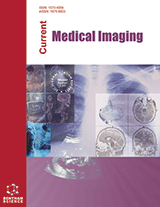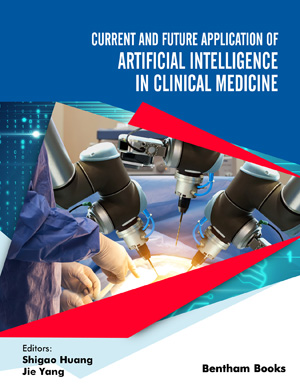
Abstract
Introduction: Artificial intelligence (AI) in medical imaging rapidly expands regarding image processing and interpretation. Therefore, the aim was to explore radiographers’ and radiologists’ perceptions and attitudes towards AI use in medical imaging technologies in Saudi Arabia.
Methods: The survey was distributed online, and responses were collected from 173 participants nationwide. Data analysis was performed using SPSS Statistics (version 27).
Results: The participants scored an average of 1.7, 1.6, and 1.8 on a scale of 1–3 for attitudinal perspectives on clinical application and the positive and negative impact of integrating AI technology in diagnostic radiology. Lack of knowledge (43.9%) and perceived cyber threats (37.7%) were the most cited factors hindering AI implementation in Saudi Arabia.
Conclusion: The radiographers and radiologists in this study had a favorable attitude toward AI integration in diagnostic radiology; nonetheless, concerns were raised about data protection, cyber security, AI-related errors, and decision-making challenges.
Keywords: Artificial intelligence, Diagnostic radiology, Radiographer, Radiologists, CT, US.
Current Medical Imaging
Title:Radiologists’ and Radiographers’ Perspectives on Artificial Intelligence in Medical Imaging in Saudi Arabia
Volume: 20
Author(s): Ali S. Alyami*, Naif A. Majrashi and Nasser A. Shubayr
Affiliation:
- Diagnostic Radiography Technology (DRT) Department, Faculty of Applied Medical Sciences, Jazan University, Jazan, Saudi Arabia
Keywords: Artificial intelligence, Diagnostic radiology, Radiographer, Radiologists, CT, US.
Abstract:
Introduction: Artificial intelligence (AI) in medical imaging rapidly expands regarding image processing and interpretation. Therefore, the aim was to explore radiographers’ and radiologists’ perceptions and attitudes towards AI use in medical imaging technologies in Saudi Arabia.
Methods: The survey was distributed online, and responses were collected from 173 participants nationwide. Data analysis was performed using SPSS Statistics (version 27).
Results: The participants scored an average of 1.7, 1.6, and 1.8 on a scale of 1–3 for attitudinal perspectives on clinical application and the positive and negative impact of integrating AI technology in diagnostic radiology. Lack of knowledge (43.9%) and perceived cyber threats (37.7%) were the most cited factors hindering AI implementation in Saudi Arabia.
Conclusion: The radiographers and radiologists in this study had a favorable attitude toward AI integration in diagnostic radiology; nonetheless, concerns were raised about data protection, cyber security, AI-related errors, and decision-making challenges.
Export Options
About this article
Cite this article as:
Alyami S. Ali*, Majrashi A. Naif and Shubayr A. Nasser, Radiologists’ and Radiographers’ Perspectives on Artificial Intelligence in Medical Imaging in Saudi Arabia, Current Medical Imaging 2024; 20 : e15734056250970 . https://dx.doi.org/10.2174/0115734056250970231117111810
| DOI https://dx.doi.org/10.2174/0115734056250970231117111810 |
Print ISSN 1573-4056 |
| Publisher Name Bentham Science Publisher |
Online ISSN 1875-6603 |
Call for Papers in Thematic Issues
Advancements and Applications of Photon Counting CT: Transforming Imaging Precision and Quantification
Photon Counting Computed Tomography (CT) represents a transformative advancement in medical imaging technology, offering unprecedented levels of precision and diagnostic capability. This special issue will explore the latest innovations and applications of photon counting CT, highlighting its advantages over traditional energy-integrating detectors. The scope includes an in-depth examination of its ...read more
Advancements in Deep Learning based Medical Image and Signal Processing for Healthcare Applications
The accurate predication from medical data (signals and images) analytics will be achieved through the use of cutting-edge AI tools for tailoring medical treatment to each patient. When the agents are done analysing the user's health data, the user can consult with the agents to receive advice and the most ...read more
AI-Driven Diagnostics in Radiology and Medical Imaging
Medical imaging data, such as X-rays, MRIs, ultrasounds, CT scans, and DXAs, can be analysed by AI algorithms to help healthcare professionals identify and diagnose diseases more rapidly and accurately. Among the most cutting-edge applications of artificial intelligence (AI) in healthcare are imaging-related applications like cancer detection. AI could revolutionise ...read more
Applying medical image processing techniques for early cancer detection in mammograms
Breast cancer survival and successful treatment are significantly boosted by early identification. Breast cancer screening is most commonly accomplished with mammography. The radiologist's experience and the image quality, among several other factors, might affect how well a mammogram is interpreted. Enhancing mammography analysis and increasing cancer early detection are made ...read more
Related Books
 14
14
- Author Guidelines
- Graphical Abstracts
- Fabricating and Stating False Information
- Research Misconduct
- Post Publication Discussions and Corrections
- Publishing Ethics and Rectitude
- Increase Visibility of Your Article
- Archiving Policies
- Peer Review Workflow
- Order Your Article Before Print
- Promote Your Article
- Manuscript Transfer Facility
- Editorial Policies
- Allegations from Whistleblowers
Related Articles
-
Bioavailability Enhancement Strategies: Basics, Formulation Approaches and Regulatory Considerations
Current Drug Delivery Inflammatory Response Modulation by Low-Dose Anti-inflammatory Drugs Treatment in an <i>In Vitro</i> Osteoarthritis Cellular Model
Current Medicinal Chemistry A Systems Medicine Clinical Platform for Understanding and Managing Non- Communicable Diseases
Current Pharmaceutical Design Immediate and Late Adverse Reactions to Iodinated Contrast Media: A Pharmacological Point of View
Anti-Inflammatory & Anti-Allergy Agents in Medicinal Chemistry Current Scenario of Clinical Diagnosis to Identify Inborn Errors of Metabolism with Precision Profiling for Expanded Screening in Infancy in a Resource-limited Setting
Current Pediatric Reviews An HHV-8 Positive HIV Negative Multicentric Castleman’s Disease, who Responded well to Rituximab Alone
Cardiovascular & Hematological Disorders-Drug Targets β-Lactams in the New Millennium. Part-II: Cephems, Oxacephems, Penams and Sulbactam
Mini-Reviews in Medicinal Chemistry Meet Our Editor
Current Computer-Aided Drug Design NMR-Based Quality Control Approach for the Identification of False Positives and False Negatives in High Throughput Screening
Current Drug Discovery Technologies Matrix Metalloproteinases and their Tissue Inhibitors in Diabetes, Atherosclerosis and Prediction of the Cardiovascular Risk
Current Enzyme Inhibition P-selectin Cell Adhesion Molecule in Inflammation, Thrombosis, Cancer Growth and Metastasis
Current Medicinal Chemistry A Deep Learning Model for Diagnosing COVID-19 and Pneumonia through X-ray
Current Medical Imaging Mathematical Methods to Analysis of Topology, Functional Variability and Evolution of Metabolic Systems Based on Different Decomposition Concepts
Current Drug Metabolism Using Bacteria and Fungi as Plant Biostimulants for Sustainable Agricultural Production Systems
Recent Patents on Biotechnology Adeno-Associated Virus Vectors: Immunobiology and Potential Use for Immune Modulation
Current Gene Therapy Adverse Reactions and Pathogen Safety of Intravenous Immunoglobulin
Current Drug Safety Drug Targets in Severe Acute Respiratory Syndrome (SARS) Virus and other Coronavirus Infections
Infectious Disorders - Drug Targets Organophosphorus Compounds: Intervention in Mechanisms of Signal Transduction Relevant to Proliferative, Immunological and Circulatory Disorders
Current Medicinal Chemistry The Potential Use of Cyclosporine Ultrafine Solution Pressurised Metered- Dose Inhaler in the Treatment of COVID-19 Patients
Recent Advances in Drug Delivery and Formulation In Silico Validation and Structure Activity Relationship Study of a Series of Pyridine-3-carbohydrazide Derivatives as Potential Anticonvulsants in Generalized and Partial Seizures
Central Nervous System Agents in Medicinal Chemistry











